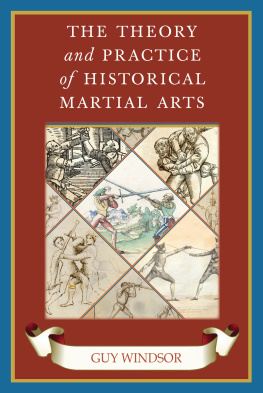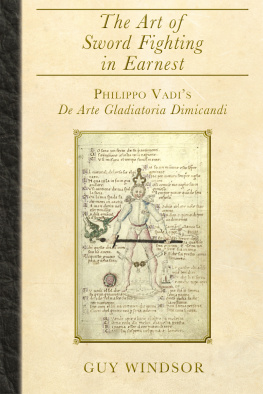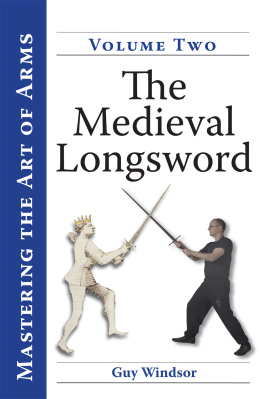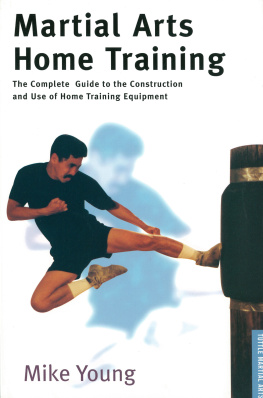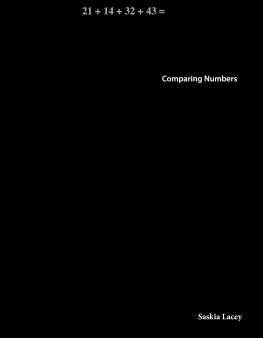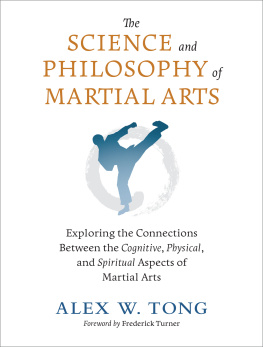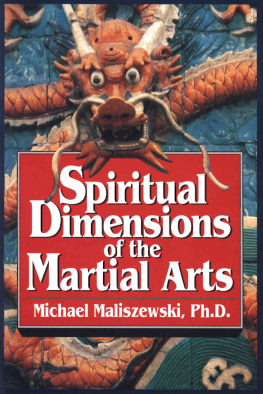Guy Windsor - The Theory and Practice of Historical Martial Arts
Here you can read online Guy Windsor - The Theory and Practice of Historical Martial Arts full text of the book (entire story) in english for free. Download pdf and epub, get meaning, cover and reviews about this ebook. year: 2018, publisher: Spada Press, genre: Religion. Description of the work, (preface) as well as reviews are available. Best literature library LitArk.com created for fans of good reading and offers a wide selection of genres:
Romance novel
Science fiction
Adventure
Detective
Science
History
Home and family
Prose
Art
Politics
Computer
Non-fiction
Religion
Business
Children
Humor
Choose a favorite category and find really read worthwhile books. Enjoy immersion in the world of imagination, feel the emotions of the characters or learn something new for yourself, make an fascinating discovery.
- Book:The Theory and Practice of Historical Martial Arts
- Author:
- Publisher:Spada Press
- Genre:
- Year:2018
- Rating:4 / 5
- Favourites:Add to favourites
- Your mark:
- 80
- 1
- 2
- 3
- 4
- 5
The Theory and Practice of Historical Martial Arts: summary, description and annotation
We offer to read an annotation, description, summary or preface (depends on what the author of the book "The Theory and Practice of Historical Martial Arts" wrote himself). If you haven't found the necessary information about the book — write in the comments, we will try to find it.
Guy Windsor: author's other books
Who wrote The Theory and Practice of Historical Martial Arts? Find out the surname, the name of the author of the book and a list of all author's works by series.
The Theory and Practice of Historical Martial Arts — read online for free the complete book (whole text) full work
Below is the text of the book, divided by pages. System saving the place of the last page read, allows you to conveniently read the book "The Theory and Practice of Historical Martial Arts" online for free, without having to search again every time where you left off. Put a bookmark, and you can go to the page where you finished reading at any time.
Font size:
Interval:
Bookmark:
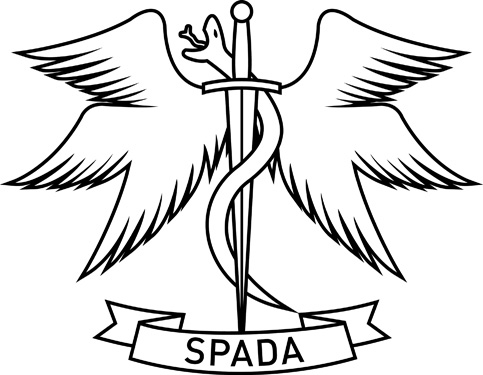
www.spada.press
(c) 2018 Guy Windsor
www.guywindsor.com
No part of this book may be reproduced or transmitted in any form or by any other means without permission in writing from the author, except by a reviewer who wishes to quote brief passages in connection with a review written for insertion in a magazine, newspaper or broadcast.
Neither the author nor the publisher assumes any liability for the use or misuse of information contained in this book, nor do the authors or publishers encourage the use of martial arts techniques other than for personal development and historical study. Study of historical martial arts can be dangerous and should only be practiced under the guidance of a qualified instructor.
ISBN 978-952-7157-28-2 The Theory and Practice of Historical Martial Arts (hardback)
ISBN 978-952-7157-29-9 The Theory and Practice of Historical Martial Arts (paperback)
ISBN 978-952-7157-30-5 The Theory and Practice of Historical Martial Arts (PDF)
ISBN 978-952-7157-31-2 The Theory and Practice of Historical Martial Arts (EPUB)
ISBN 978-952-7157-32-9 The Theory and Practice of Historical Martial Arts (MOBI)
Book design by Zebedee Design
Cover Artwork by Curtis Fee
For my wife Michaela
Love, always.
TABLE OF CONTENTS
I think it all began at the fencing club at Edinburgh University in 1992, when Charlie Napier ran down the fencing strip at me. His foil was held across his body, with the point way back behind him. I extended my arm, and he ran his body onto my point as his foil flicked around, the blade bending in a graceful arc and tapping me harmlessly on the shoulder. Both lights went off, and the president called the hit. For Charlie. Because he started moving forwards first: he had priority, and his suicidal approach took precedence over my safe, careful and lethal response. Id been fencing for five years at school, but there we had always followed a much stricter interpretation of the International Fencing Federations (FIE) rules, leading to a much more classical and cautious style of play.
But when Charlie got given point after point, I realised that the modern sport of fencing was completely unrealistic and had practically nothing in common with its martial roots any more. A little while later I was at a local competition and got talking to a beginner fencer, Paul, who had taken up the sport a few weeks earlier and was already becoming disillusioned with it. We got together in Holyrood Park under Salisbury Crags, and with pes and fencing masks set about trying to kill each other in a realistic manner. Proper hits. No suicidal running about. Treat the swords like they are sharp, and bugger the modern rules.
My grandpa had been a fencer, but he died when I was only thirteen. Id had a couple of lessons off him, but nothing serious. The next time I went down to London to see my granny, I dug through Grandpas books and found Alfred Huttons The Sword and the Centuries. In it, Hutton refers to dozens of old books written in the days when swords were used for real. This set me off on a quest to find some of these books, and I set to work figuring out how swordfighting should be done. It has always been obvious to me that people who fought for real are more likely to know how to fight than us modern folk trying to figure it out from scratch. And one day, in the National Library of Scotland, I found Donald McBanes The Expert Sword-Mans Companion. This glorious little book begins with 70 pages or so of autobiography (and what a life he led! Duelling, gambling, whoring and soldiering his way across Europe under Marlborough at the turn of the eighteenth century), which was followed by a very practical treatise on sword fighting and a set of instructions for gunnery. Before long my friends and I had also tracked down George Silvers Paradoxes of Defence from 1599, and some really poor photocopies of some medieval sources, such as I.33 and the Novati facsimile of Il Fior di Battaglia. By the beginning of 1994, we realised we had to create a formal society for studying these arts (we didnt even have a name for what we were doing I think we came up with the term historical swordsmanshiparound then). This was mostly so we could get other people to come along, because we were getting bored fencing just with each other.
We came across battle re-enactment and were extremely excited to meet other sword enthusiasts until we realised that they were not interested in the historical swordfighting methods that we were obsessed by. Their interest was broader, and encompassed the clothing, uniforms, battle formations and all that; the actual combat styles were completely unhistorical, invented solely as a way to allow steel-on-steel action in the safest possible way. I regret to say that, being young and foolish, we occasionally behaved rather badly and put our historical techniques to work on unsuspecting re-enactors.
Unbeknownst to us, other groups with interests closer to our own were springing up across the world: the Chicago Swordplay Guild, for one; and the Historical Armed Combat Association in Texas, for another. The internet was only just becoming a thing, so we had no way to find these people until it was actually possible to search the World Wide Web in the mid nineties. The Swordplay Symposium International, held at Livermore, California in 2000, was the first convention dedicated to Historical Martial Arts, and Paul went to it. Then all of a sudden, word got around, and we were no longer just a little group of oddballs in Edinburgh; we were at the forefront of a growing international movement. The rest, as they say, is history.
You might be asking who am I to be teaching you this material, and you should ask this question of every expert and the author of every book, treatise, source or reference you come across. Lets face it: not every author really ought to be writing books, and not everyone who claims to know things about swords actually does and this is just as true today as it was hundreds of years ago. I would say its especially important when youre considering modern experts (like me).
Ive been researching historical source material since about 1993. I have a degree in English literature from Edinburgh University, so I know how to read books and write about them. I graduated in 1996. I founded The Dawn Duellists Society in Edinburgh in 1994. It is still going strong today. I founded The School of European Swordsmanship in 2001. Its still going and it has branches all over the world. My first book, The Swordsmans Companion, came out in 2004. Ive written and published eight books since then and my training syllabus is online for all to see. Ive also created Audatia: the Medieval Combat Card Game, which accurately represents medieval Italian longsword fencing.
All that this means is that it is easy for you to judge one way or the other whether my opinion and my approach, my way of doing things, is worth anything. So have a look at my videos and read some of my books (like this one), and decide for yourself whether or not you think I know what Im talking about. Its perfectly all right if you think I dont.
Its really important that you can clearly identify the authority behind whatever it is youre practising. You might practise your art because this is what your teacher tells you to do. Thats fine. You might practise it because this is how it was written down in this particular book hundreds of years ago. Thats also fine. Or you might practise it this way because you can win tournaments with it. Thats fine too. So long as you are absolutely clear what your authority is, you can practise authentically. I hope that after studying this book youll be able to use a historical source as your authority, and then have other people who have read the same source look at what youve come up with and say do you know what? Youre probably right.
Font size:
Interval:
Bookmark:
Similar books «The Theory and Practice of Historical Martial Arts»
Look at similar books to The Theory and Practice of Historical Martial Arts. We have selected literature similar in name and meaning in the hope of providing readers with more options to find new, interesting, not yet read works.
Discussion, reviews of the book The Theory and Practice of Historical Martial Arts and just readers' own opinions. Leave your comments, write what you think about the work, its meaning or the main characters. Specify what exactly you liked and what you didn't like, and why you think so.

